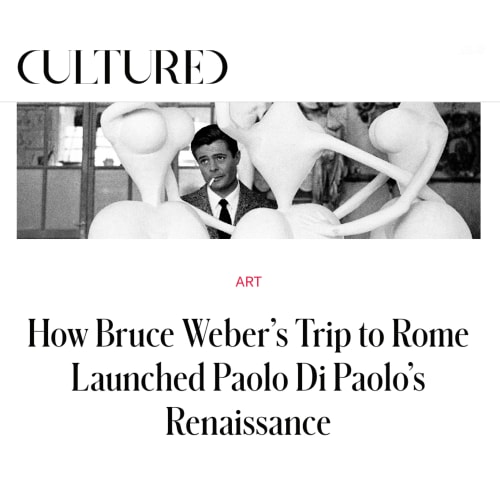Bruce Weber, legendary fashion photographer and chronicler of a bygone era, made a discovery in a gallery in Rome that altered the latest chapter of his career.
Back home in Miami with his partner Nan Bush, the cockatiels, five golden retrievers, and two cats, Weber is focused on securing international distribution for the film. He wants Di Paolo to be recognized as “a national treasure of Italy, just as Cecil Beaton is for England and Henri Cartier-Bresson is for France.” Weber’s own presence is barely seen on screen, but his commitment to memorializing Di Paolo’s work reveals itself nonetheless. Late in the film, a quote from the American photographer Nan Goldin appears: “I used to think that I could never lose anyone if I photographed them enough. In fact, my pictures show me how much I have lost.”
This sentiment rings true for Weber, who has resolved to never stop shooting. “A lot of people aren’t here anymore,” he says. “I look back at my pictures and I say, ‘My God.’ Like River Phoenix. I just adored River and loved photographing him. I went to his house, got to know the rest of his family and his mom,” Weber reflects. “And that’s gone."

